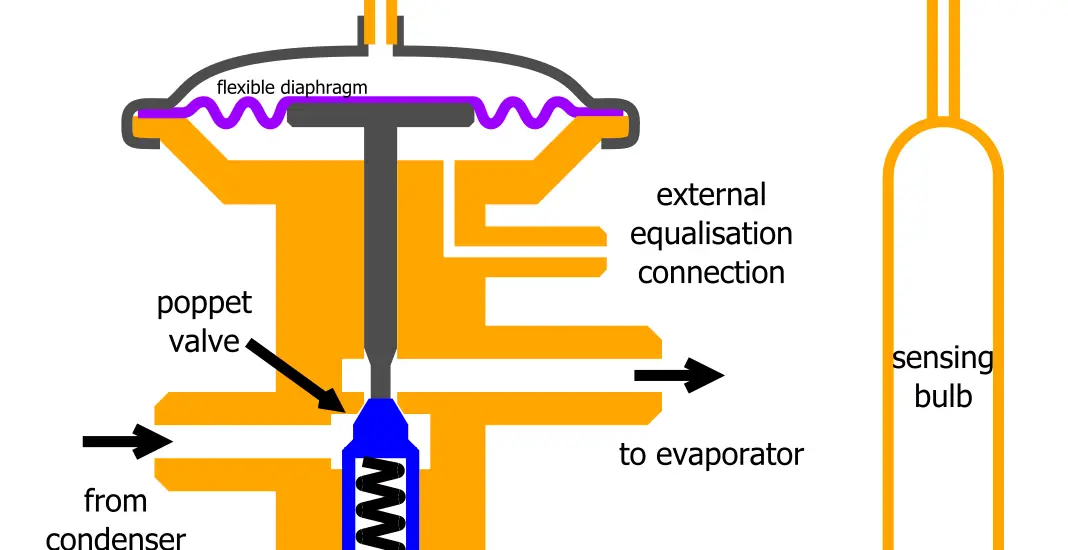If you’re searching for a clear and thorough answer to the question “What is TXV?”, you’ve landed on the right article. This guide will cover every essential aspect of Thermal Expansion Valves (TXV), making it easy for you to understand their function, importance, and maintenance even if you’re completely new to the topic.

Table of Contents
What is TXV: An Overview
The term TXV is an acronym for Thermal Expansion Valve, and it’s a critical component often found in HVAC (Heating, Ventilation, and Air Conditioning) systems as well as refrigeration units. Understanding what TXV is starts with recognizing that it’s more than just a valve; it’s the cornerstone of effective cooling.
This component is situated between the high-pressure side and the low-pressure side of your system, specifically at the entrance of the evaporator coil.
In layman’s terms, imagine your cooling system as a busy highway. The TXV acts like a traffic cop, directing the ‘cars’ (refrigerant in this case) where to go and how fast to move. It manages the flow of refrigerant, determining how much goes into the evaporator coil at any given time.
This is vital because the evaporator coil is where the actual cooling happens. The refrigerant absorbs heat from the indoor air, turning it from a low-pressure liquid into a low-pressure gas. The TXV ensures that just the right amount of refrigerant enters the evaporator coil to make this process as efficient as possible.
How Does a TXV Work?
Knowing what a TXV is also involves understanding its functioning. The valve consists of a temperature sensor, usually a bulb filled with a substance that expands and contracts with temperature changes.
This sensor is placed at the outlet of the evaporator coil. When the sensor detects a temperature change, it prompts the valve to open or close, thereby regulating the flow of refrigerant.
The operation of a TXV is automatic. It adjusts according to the cooling load, ensuring that the evaporator receives the optimal amount of refrigerant for effective cooling.
Importance of TXV in Cooling Systems
Understanding what TXV is also means recognizing its importance in cooling systems. A TXV allows your air conditioner or refrigeration system to operate more efficiently.
It helps in maintaining a stable temperature and ensures that the system doesn’t have to work harder than necessary. This leads to reduced energy consumption and, in turn, lower energy bills.
Moreover, a well-functioning TXV can extend the lifespan of your system by preventing excessive wear and tear. It achieves this by ensuring that the system operates under optimal conditions.
Check out these other related articles…
How to Adjust Expansion Valve in 6 Easy Steps
How to Adjust Car AC Expansion Valve in 8 Easy Steps
Adjusting TXV Superheat: 6 Easy Steps to Follow
TXV Adjustment Clockwise: How to Do It in 5 Easy Steps
Danfoss Expansion Valve Adjustment: A Comprehensive Guide
Common Issues with TXV
TXVs are generally reliable, but they can face issues like any other mechanical component. Some common problems include sticking, where the valve fails to open or close correctly, and leaking, where refrigerant escapes from the system.
These issues can cause your cooling system to operate inefficiently, leading to increased energy bills and reduced cooling effectiveness.
How to Troubleshoot and Repair a TXV
When you encounter issues with a TXV, the first step is to consult the system’s manual for troubleshooting tips. If you’re not comfortable doing it yourself, it’s highly recommended to seek professional assistance.
In some cases, the valve may be clogged and require cleaning. Other times, the valve may need to be replaced entirely.
If you opt for DIY troubleshooting, always make sure to turn off the power to the system for safety. Use a multimeter to check electrical continuity and consult your system’s manual for specific troubleshooting steps that apply to your model.
If you don’t have a multimeter, you can get this AstroAI Multimeter Tester from Amazon.